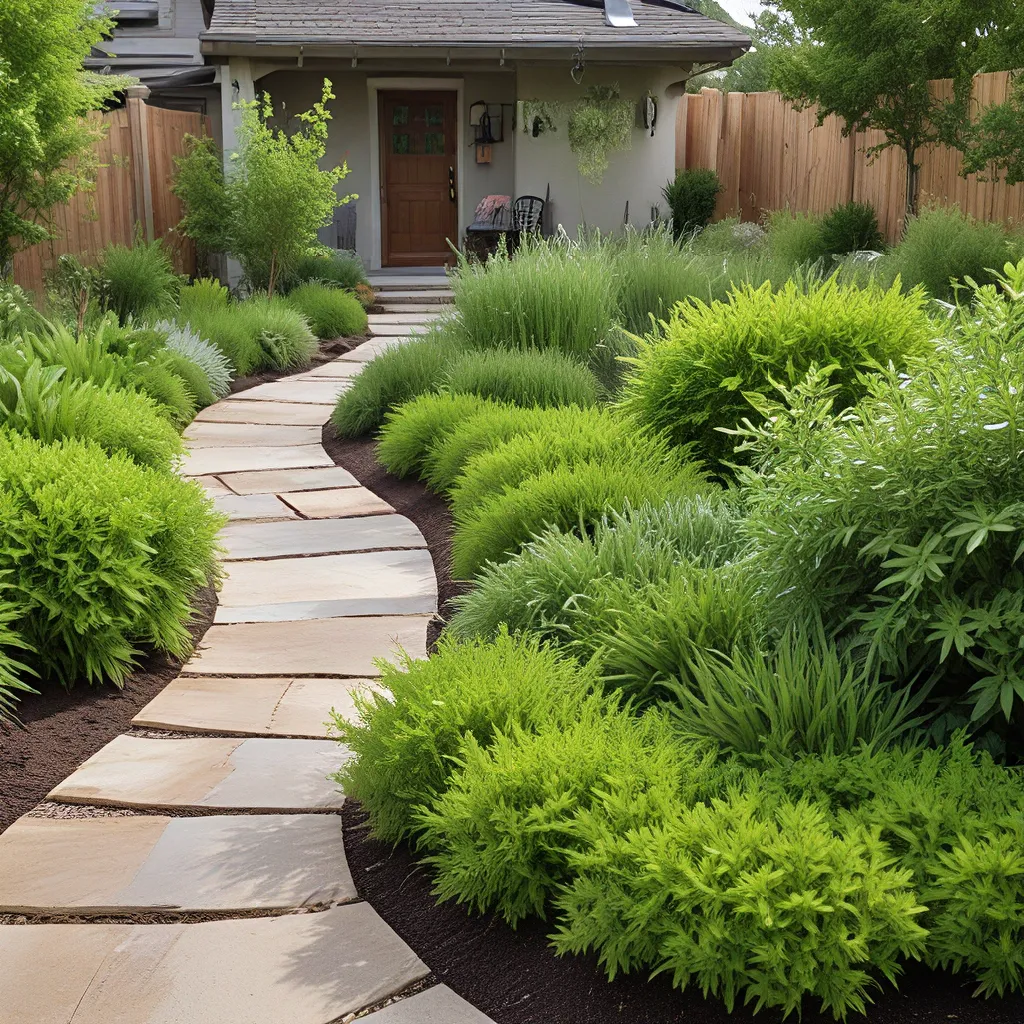
Ah, the great outdoors – where nature reigns supreme and our connection to the earth is most palpable. As a passionate advocate for environmental conservation, I’ve often wondered how we can transform our living spaces into eco-friendly oases that not only nourish our souls but also contribute to the health of our planet. Well, my friends, the answer lies in the realm of sustainable landscaping.
The Water-Saving Superpower
Let’s start with the most precious resource on Earth – water. I don’t know about you, but I cringe every time I see sprinklers running during a rainstorm or water gushing down the sidewalk, wasted and wanton. Living in a region plagued by water scarcity and unpredictable weather patterns, I’ve learned the importance of water conservation the hard way. But fear not, sustainable landscaping is here to save the day!
By swapping out our thirsty, resource-guzzling lawns for artificial grass, we can bid farewell to the endless cycle of watering, mowing, and fertilizing. Imagine a lush, verdant expanse that requires no irrigation, no pesticides, and minimal maintenance. It’s the landscaping equivalent of a superhero, right?
The Water-Wise Transformation
Reflecting on my own journey, I can recall the day I decided to ditch the traditional grass and embrace the wonders of artificial turf. At first, I’ll admit I was a bit skeptical – would it really look as good as the real thing? But as soon as the installation was complete, I was blown away. The vibrant, uniform green blades seamlessly blended with the natural surroundings, creating a landscape that was both visually stunning and environmentally responsible.
The best part? I no longer have to worry about dragging the garden hose out on scorching summer days or watching helplessly as my lawn turns into a crunchy, sun-baked mess. Nope, my artificial grass stays lush and verdant all year round, without a single drop of water wasted. It’s a water-saving superpower that’s music to my ears (and my water bill)!
Reducing Emissions, One Lawn at a Time
But wait, the sustainable landscaping benefits don’t stop there. Let’s talk about the impact of traditional lawn maintenance on the environment. Just think about all the gas-guzzling lawnmowers, leaf blowers, and trimmers we’ve been using to keep our yards pristine. The fumes, the noise, the carbon footprint – it’s enough to make an eco-warrior cringe.
Thankfully, the switch to artificial grass eliminates the need for all that energy-intensive equipment. No more pulling the cord on the mower, no more the deafening roar of the leaf blower, and no more guilt over the emissions we’re pumping into the atmosphere. It’s a win-win for both our lungs and the planet.
Breathing Easier, Literally
I can still remember the relief I felt when I realized I could ditch the gas-powered lawn tools for good. Gone were the days of choking on exhaust fumes and feeling like I was single-handedly contributing to climate change with every pull of the starter cord. Instead, I could enjoy the peaceful serenity of my backyard oasis, without the constant drone of engines and the lingering scent of gasoline.
And let’s not forget the added benefit of noise reduction. Artificial grass means no more ear-splitting mowing sessions that disrupt the natural tranquility of our neighborhoods. It’s a small but significant step towards creating a quieter, more harmonious living environment for all.
Embracing the Eco-Friendly Approach
As I reflect on my sustainable landscaping journey, I’m struck by the profound impact it’s had on my life and the environment around me. From conserving precious water resources to reducing my carbon footprint, this eco-friendly approach has truly been a game-changer.
But the benefits don’t stop there. Artificial grass also eliminates the need for harmful pesticides, fertilizers, and herbicides – all of which can wreak havoc on our local ecosystems. By removing these toxic chemicals from the equation, we’re creating a safer, healthier environment for wildlife, pets, and our own families.
The Lasting Impact
Interestingly, the effects of sustainable landscaping go beyond just water and emissions. Research has shown that the use of compost and mulch in landscaping can also enhance groundwater recharge, filter out contaminants, and mitigate flash flooding. It’s a holistic approach that benefits our land, our water, and our air – a true trifecta of environmental stewardship.
And the best part? The positive impact of sustainable landscaping is not limited to individual homeowners like myself. Cities and communities across the country are embracing this eco-friendly approach, recognizing the crucial role it plays in building resilience against the effects of climate change.
So, my fellow nature-lovers, I encourage you to take a long, hard look at your own outdoor spaces and consider the transformative power of sustainable landscaping. Trust me, the water-saving, emission-reducing, and eco-friendly benefits are well worth the effort. It’s time to create the backyard oasis of your dreams while leaving a lasting, positive impact on our precious planet.